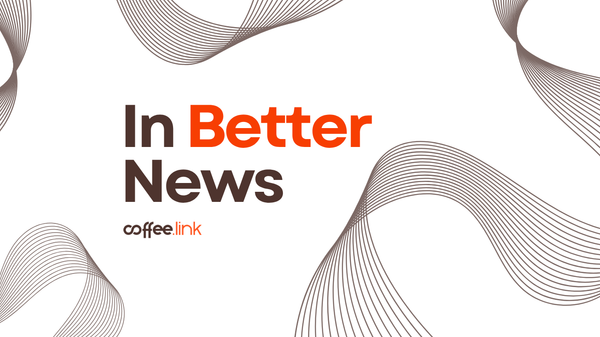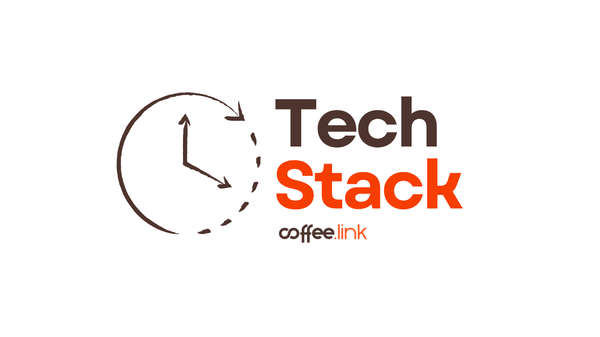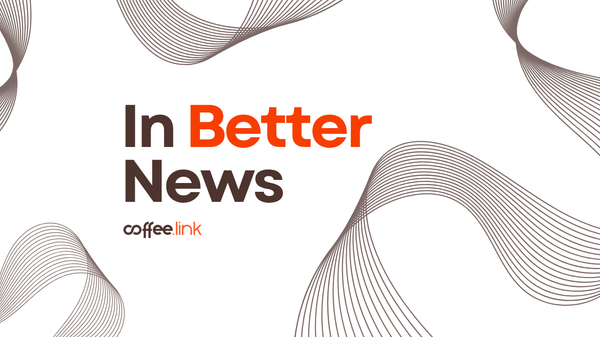In Part 1, we explored the tier hierarchy - how networks are classified by their business relationships. But there's a more fundamental unit that makes the internet work: the Autonomous System (AS). Every network on the internet, regardless of tier, operates as an AS. Understanding how these systems work, interconnect, and make routing decisions is essential to understanding the internet itself.
An Autonomous System is a collection of IP networks under single administrative control that presents a common routing policy to the internet. Think of it as a country in the world of networking - it has sovereignty over its internal affairs, but must negotiate with other countries (ASes) for international relations (traffic exchange).
What Is an Autonomous System?
Every AS is identified by a globally unique Autonomous System Number (ASN), assigned by Regional Internet Registries (RIRs). This number is what other networks use to identify you in BGP - the protocol that glues the internet together.
Real-world examples of who operates ASes:
- Internet Service Providers: Comcast (AS7922), AT&T (AS7018)
- Content providers: Netflix (AS2906), Google (AS15169)
- Enterprises: Apple (AS714), JPMorgan Chase (AS10994)
- Cloud providers: AWS (AS16509), Azure (AS8075)
ASNs come in two flavors: 2-byte ASNs (1-65535, mostly exhausted) and 4-byte ASNs (65536-4294967295, introduced in 2007). Getting an ASN costs $50-1,400 depending on your region, plus annual fees from ARIN, RIPE, APNIC, LACNIC, or AFRINIC.
How Autonomous Systems Connect
BGP: The Language ASes Speak
Border Gateway Protocol (BGP) is how ASes announce their routes and learn about others. It's fundamentally a distance-vector protocol that works on trust and business relationships.
# AS64512 establishing BGP session with AS64513
router bgp 64512
neighbor 198.51.100.1 remote-as 64513
# What gets announced:
network 192.0.2.0/24 # Our own network
network 198.51.100.0/24 # Our customer's network
# What we receive: routes from AS64513
# AS Path shows the networks to traverse: "64513"
Physical Connection Types
ASes physically interconnect through three main methods:
Private Network Interconnect (PNI): Direct fiber between two networks. Used for high-volume relationships like Netflix connecting to Comcast.
Internet Exchange Points (IXP): Shared switch fabric where many ASes connect. One port reaches hundreds of networks. Major IXPs include DE-CIX Frankfurt, AMS-IX, and Equinix Ashburn.
Transit Connections: Customer connects to provider's edge router, often in carrier-neutral data centers.
BGP Routing and Traffic Engineering
How ASes Make Routing Decisions
When multiple paths exist to a destination, BGP follows a strict priority list:
- Highest Local Preference (internal policy)
- Shortest AS Path (fewest networks to traverse)
- Lowest MED (Multi-Exit Discriminator)
- Prefer eBGP over iBGP routes
- Lowest IGP metric to next hop
ASes manipulate these attributes to control traffic flow:
# AS Path Prepending - Make path look longer
route-map PREPEND-OUT permit 10
set as-path prepend 64512 64512 64512
# Other ASes see: "64512 64512 64512 64512"
# Local Preference - Control outbound traffic
route-map PREFER-PEER permit 10
set local-preference 150 # Default is 100
# Communities - Tags that trigger actions
set community no-export # Don't advertise beyond this AS
set community 3356:9999 # Level3's blackhole community
Major providers publish their BGP communities:
AS Relationships and Business Models
The Five Types of AS Relationships
- Customer-Provider (Transit): Customer pays provider for full internet connectivity
- Peer-Peer (Settlement-Free): Mutual exchange of customer routes, no payment
- Peer-Peer (Paid): One AS pays for peering when traffic is imbalanced
- Sibling ASes: Same organization operates multiple ASNs
- Route Server Peering: Multilateral peering through IXP route servers
Valley-Free Routing
The "valley-free" principle ensures nobody gives away free transit. Traffic should never go Provider→Peer→Provider (that would mean the peer is providing free transit).
# To customers: Send everything (they pay for it)
route-map TO-CUSTOMER permit 10
# No filter - full routes
# To peers: Only send customer routes
route-map TO-PEER permit 10
match community CUSTOMER-ROUTES
# Never send peer or provider routes
# To providers: Only send our originated routes
route-map TO-PROVIDER permit 10
match as-path LOCAL-ONLY
View peering policies of major networks:
AS Business Models
Different AS types have different economics:
- Access ISPs: Revenue from subscribers ($50-150/month), transit costs 30-50% of revenue
- Content Providers: No networking revenue, minimize delivery costs through peering
- Enterprises: Cost center focused on redundancy over savings
- Cloud Providers: Network is competitive advantage, aggressive peering
AS Security
BGP Hijacking
BGP operates on trust - any AS can announce any prefix, leading to hijacking incidents tracked by BGPStream:
| Date | Incident | Impact |
|---|---|---|
| 2008 | Pakistan Telecom hijacks YouTube | Global outage, 2 hours |
| 2018 | China Telecom hijacks Google | Traffic redirected through China |
| 2022 | Rostelecom hijacks Twitter | 200+ prefixes affected |
# Legitimate: AS15169 announces 8.8.8.0/24
# Hijacker: AS99999 announces 8.8.8.0/25 (more specific wins!)
# Result: Half of Google DNS traffic goes to attacker
RPKI: Cryptographic Protection
Resource Public Key Infrastructure (RPKI) lets ASes cryptographically sign their announcements. Check validation status at RPKI Validator or Cloudflare's RPKI Portal:
# ROA declares "8.8.8.0/24 only from AS15169"
router bgp 64512
bgp rpki server 192.0.2.1
route-map VALIDATE permit 10
match rpki valid
set local-preference 110 # Prefer validated
route-map VALIDATE deny 20
match rpki invalid # Reject hijacked routes
Adoption remains limited: ~40% of IPv4 space has ROAs, but only ~30% of networks validate.
AS Operations
Running Your Own AS
Operating an AS requires significant resources:
Technical Requirements:
- BGP-capable routers with 8GB+ RAM for full table
- 24/7 operations capability
- Redundant connections
- Monitoring systems
Monthly Costs (Small AS):
Transit (1Gbps): $500-2,000
Colocation: $500
Cross-connects: $400
Staff (fractional): $5,000
Tools/Monitoring: $200
Total: ~$7,000-10,000/month
Build vs Buy Decision
def should_operate_own_as(monthly_bandwidth_gb):
# Operating costs
as_costs = {
'staff': 10000,
'equipment': 2000,
'monitoring': 500,
'fees': 250
}
# Customer vs operator comparison
customer_cost = monthly_bandwidth_gb * 5 # $5/Mbps retail
operator_cost = sum(as_costs.values()) + (monthly_bandwidth_gb * 1) # $1/Mbps wholesale
if customer_cost > operator_cost:
return f"Save ${customer_cost - operator_cost}/month by operating AS"
else:
return f"Stay customer, save ${operator_cost - customer_cost}/month"
Rule of thumb: Need 10+ Gbps sustained traffic to justify operating an AS.
Common Operational Problems
Route Leaks: Accidentally announcing routes you shouldn't
# WRONG: No filter to upstream
neighbor 192.0.2.1 remote-as 3356
# RIGHT: Filter what you announce
neighbor 192.0.2.1 route-map OUR-ROUTES-ONLY out
BGP Hijacking Detection:
# Use looking glasses to verify your announcements
telnet route-views.oregon-ix.net
> show ip bgp 192.0.2.0/24
# Check for unexpected AS paths to your prefix
Check your AS visibility at:
Major network looking glasses:
Anycast and Multi-AS Strategies
Some services use anycast - announcing the same prefix from multiple locations:
# Cloudflare DNS (1.1.1.1) announced globally
San Francisco: AS13335 announces 1.1.1.0/24
London: AS13335 announces 1.1.1.0/24
Tokyo: AS13335 announces 1.1.1.0/24
# Users reach nearest location via BGP path selection
Examples of anycast services:
- Cloudflare (AS13335) - Global CDN and DNS
- Google Public DNS - 8.8.8.8
- Root DNS Servers - Critical infrastructure
- Quad9 (AS19281) - Security-focused DNS
Large organizations often operate multiple ASNs:
- Geographic separation (AS per region)
- Service isolation (separate AS for cloud vs main services)
- Regulatory compliance (country-specific requirements)
AS Economics
What Makes an AS Valuable
ASNs and their resources can be valuable assets:
-
IPv4 Addresses: $40-60 per IP address (check current prices at IPv4.Global or IPv4 Market Group)
- /24 block: $10,000-15,000
- /16 block: $2.6-3.9 million
-
Clean Reputation: 20-30% premium for non-blacklisted space
-
Established Peering: Valuable relationships that took years to build (viewable on PeeringDB)
-
Low ASN: 2-digit ASNs have collector value
The Peering Decision
def evaluate_peering(traffic_gbps, transit_cost_per_gbps):
# IXP peering costs
ixp_port = 2000 # Monthly
cross_connect = 500
# Calculate savings
transit_avoided = traffic_gbps * transit_cost_per_gbps
peering_cost = ixp_port + cross_connect
monthly_savings = transit_avoided - peering_cost
return {
'monthly_savings': monthly_savings,
'worthwhile': monthly_savings > 0
}
Find peering opportunities at:
- PeeringDB - Global peering directory
- Euro-IX IXP Database - European IXPs
- IX.br - Brazilian IXP system
Future of Autonomous Systems
IPv6 Impact
IPv6 is changing AS operations with parallel routing tables, easier PI space allocation, and higher RPKI adoption. Modern ASes must handle dual-stack complexity. Track IPv6 adoption at:
Security Evolution
ASPA (AS Provider Authorization): Coming 2025-2026, cryptographically validates provider relationships to prevent route leaks. Follow development at IETF SIDROPS.
BGPsec: Adds cryptographic signatures to entire AS paths but faces deployment challenges due to computational overhead. Details in RFC 8205.
Consolidation Trends
AS Growth:
2010: 35,000 active ASes
2020: 68,000 active ASes
2025: 73,000 active ASes (growth slowing)
By 2030:
- 50-100 "Super ASes" carry 90% of traffic
- Hyperscale providers dominate
- Enterprise ASes declining
Track AS statistics at:
Key Takeaways
Autonomous Systems are the fundamental unit of internet routing. Every network participating in global routing operates as an AS, using BGP to exchange routes based on business relationships and technical policies.
The AS system reveals the internet's true nature: a collection of independent networks cooperating through economic agreements. Whether networks peer freely, pay for peering, or buy transit depends on traffic ratios, market power, and mutual benefit.
Operating an AS requires significant technical expertise, 24/7 operations, and capital investment. While most organizations are better served as customers, understanding AS operations is crucial for anyone working with internet infrastructure.
Security remains the biggest challenge. BGP's trust-based model enables hijacking and route leaks, making solutions like RPKI critical for future stability. Yet deployment remains incomplete due to the internet's decentralized nature.
Despite being designed in the 1990s, the AS architecture has scaled from dozens to over 70,000 networks. This remarkable resilience demonstrates the power of simple, flexible protocols. As the internet evolves toward consolidation around hyperscale providers while simultaneously spreading to edge networks, Autonomous Systems remain the essential building blocks that make global connectivity possible.
Learn More:
- NANOG (North American Network Operators Group) - Network operator community
- Internet Society BGP Resources - BGP security initiatives
- Peering Forum - European peering community
- Packet Pushers - Networking education and podcasts








